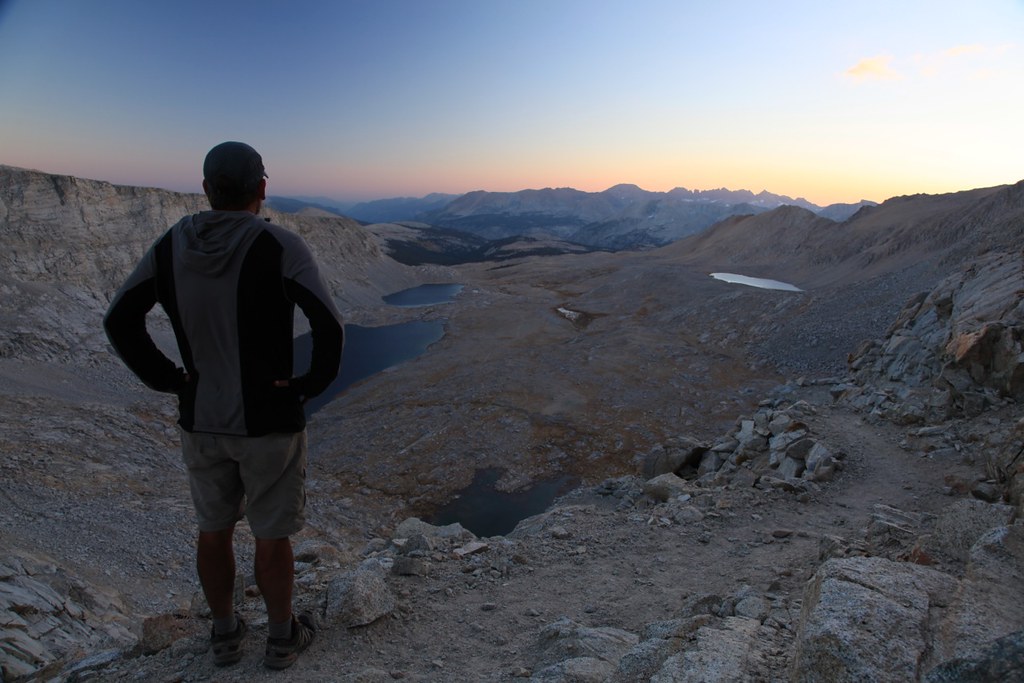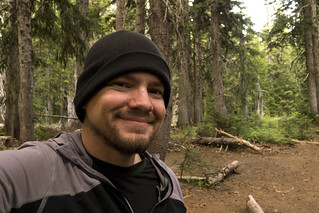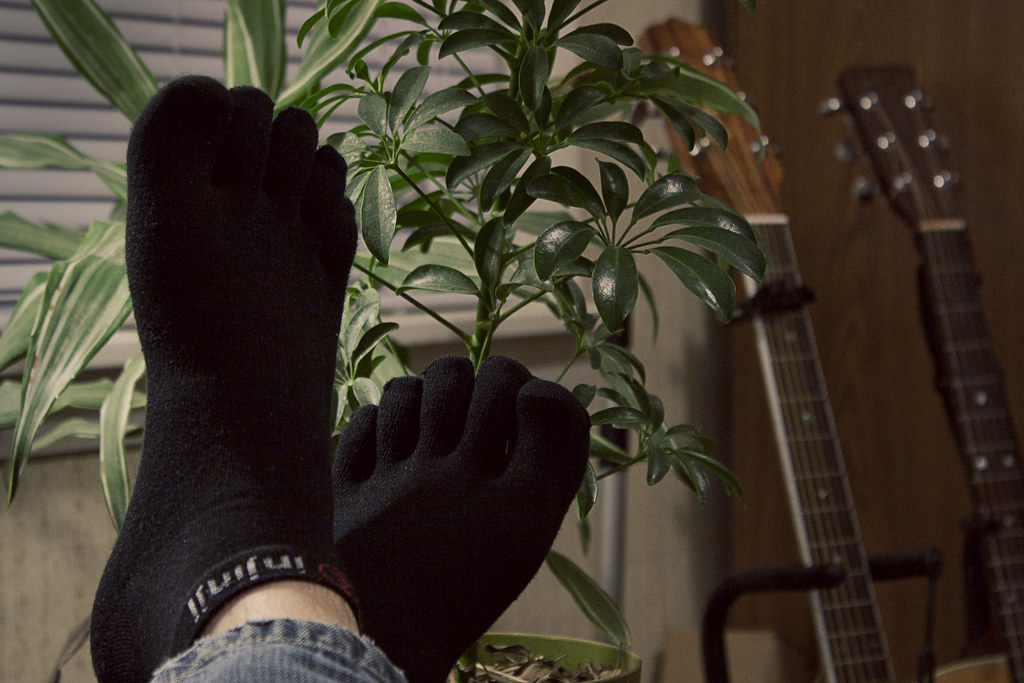 |
| (Photo: My Keen Boots after 900 miles on the AT) |
I laughed as few people could. “So did you bolt out of sleep screaming while lying on sweat-soaked sheets?”
The nightmare was sort of my fault. Earlier, I had been replying to a reader’s question about footwear and I asked for his opinion.
“I just woke up confused, thinking, did I actually buy boots?” he said. “Why would I do something that foolish?”
This great question comes from a reader named Heather. I like this question because when buying your first set of gear, certain items seem like a given. Football players need cleats, basketball players need high-tops, and hikers need sturdy leather hiking boots, right?
What footwear do you prefer on the trail?
My quick answer is that unless you are bushwhacking through rough terrain, slogging through bogs, hiking in deep snow or very cold weather, or there are other safety concerns, go with shoes. Specifically shoes designed for trail use that are:
- Lightweight
- Breathable
- One size bigger than your actual foot size and
- Have a sturdy sole that is slightly wider than your foot and not too elevated
- Have a spacious toe box
Reason #1: Shoes Are Lighter
When you put on a good pair of boots, I admit you do feel strong, like you could bulldoze through any terrain unscathed. On the other hand, a good pair of trail runners makes you feel light and fast, which is what I want. If I were doing a lot of bushwhacking or hiking through miles of cacti, perhaps I’d want a high-top leather boot, but I rarely find myself in that situation as I generally stick to designated trails.
Reason #2: Shoes Dry Quickly
When thick leather boots or Gortex boots get wet, they stay wet for way too long. Long enough to cause foot problems. I've given up on the idea that you can keep your feet dry. Whether it’s precipitation or perspiration, water will get in eventually. When it does, you don’t want your feet staying wet for very long. Soggy feet are much more prone to blisters and chafing. Hiking shoes made with breathable synthetic materials, or mesh, which will dry much more quickly.
Having an extra pair of dry socks is also important. When putting on a dry pair, I hang the wet socks on the outside of my pack with safety pins to dry while I hike. At the end of the day, I keep any damp socks in my sleeping bag, so my body heat will dry them out overnight.
Reason #3: Shoes Don’t Need To Be Broken-in
On a long enough hike, you’ll have to stop for new shoes. In my experience, until new boots are broken in, I'm more susceptible to hot spots and blisters. A good pair of trail runners, on the other hand, are usually comfortable out of the box.
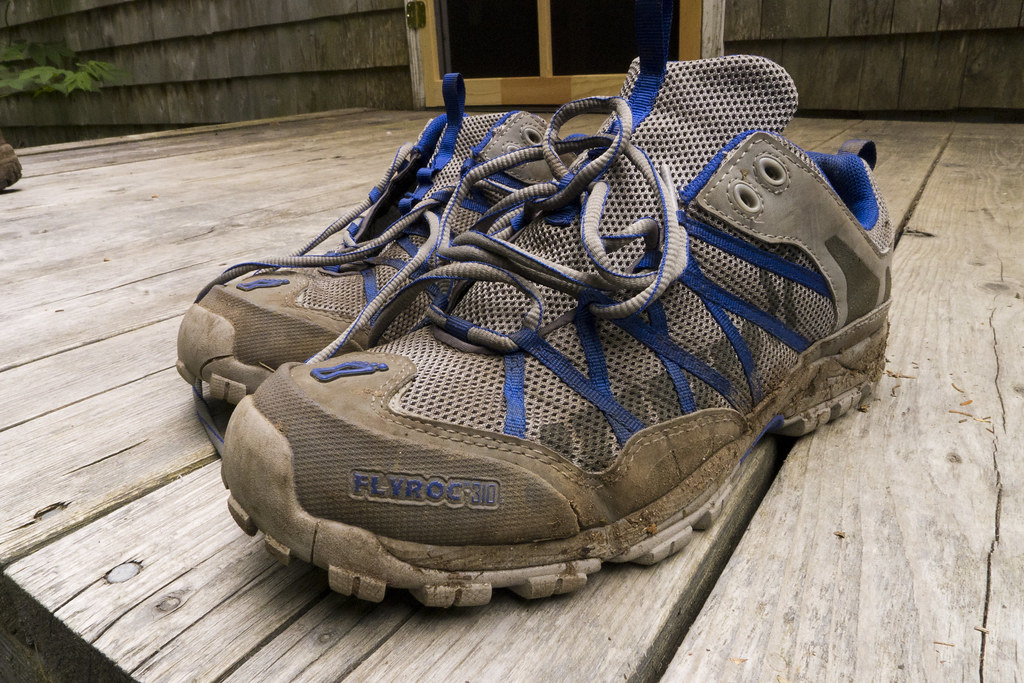 |
| (Photo: My "$780" pair of shoes) |
My first 300-400 miles on the Appalachian Trail, I hiked in a pair of Inov-8 trail runners. I could roll them up like a pill bug with little resistance from the sole. They only cost about $80, but about $700 in medical bills.
The problem was the flimsy sole. As a barefoot runner, I believed the less my shoes unnaturally constrained my foot the better. I still believe there may be some truth to that, but it isn’t natural to carry 30 lbs. on your back and hike on rough terrain for months. I learned the expensive way the importance of sturdy soles.
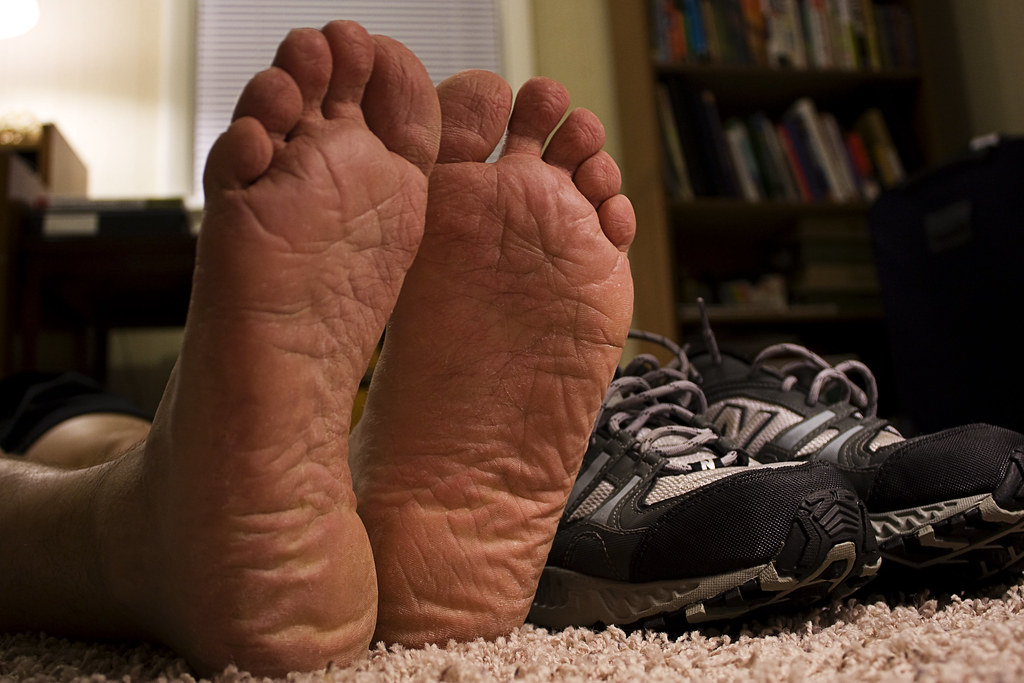 |
| (Photo: My rugged barefoot runner feet are blister-proof) |
Ankle Support
It may seem like high-top boots offer more ankle support, but I’m skeptical about that. Besides, my nonprofessional opinion is that the sole has a lot more to do with ankle protection than the high-top collar.
For example, ankle sprains are much easier with a narrow sole and they are much more severe if the sole is too thick. A wider base will help prevent your ankle from turning and the higher your foot is elevated the higher your risk of injury.
Try on a pair of shoes and sort of roll your foot side to side. Do the shoes roll easily? Do they feel like you could easily twist your ankle in them? Is there a threshold where when you turn your ankle the shoe wants to suddenly snap to the side? If so, try another pair.
 |
| (Photo: My Salomons, My Personal Favorite) |
This is another important quality in a sole. Trail shoes need good traction, especially with those prone to falling like me. My Salomons have a deep tread on the bottom that grip rocks and roots very well, even when they're wet.
Actually, I can't recall falling since I purchased my Salomons. Tell anyone who has hiked with me long enough and they would gasp in disbelief.
To conclude, in my experience, you want a sole that is:
- Sturdy, so can't be easily rolled like a pill bug
- A little wider than your foot
- Not too thick or elevated
- Has good traction
Find a shoe that fits properly then buy one size larger than normal
It's normal for feet to widen after backpacking for a while and they tend to swell after hiking long distances. Due to this, I've learned to buy a full size larger than I need.
Make sure your foot doesn't slide around too much in the shoe. This will lead to hot spots and blisters. A properly fitted insole with a deeper heel cup will help prevent this.
I have slightly wider feet than normal, so much so that the first hole I get in most shoes will be right next to my pinkie toes. Therefore, I prefer a wider toe box. Along with some rubber on the front, the extra room in the toe box will also protect your toes when you kick rocks and roots. And you will, many many times.
Try on multiple pairs and brands, A Plug For Zappos.com
Try on several brands. Many people swear by their pair of Merrells, but the two pair of Merrels I tried destroyed my feet, one pair had me limping in less than 5 miles. They just don’t work for me. I love my Salomons, but they may not fit other feet as well.
Before hiking the Appalachian Trail, I ordered about ten pair of shoes on Zappos.com. I kept my favorite four, and then returned the others. Zappos has free 1-2 day shipping both ways, competitive prices, a large selection of hiking shoes, and a 365-day return policy. This allowed me to have extra pairs of shoes at my sister’s house in case I needed her to send me a new pair. When I finished the trail six months later, I followed their incredibly simple return process and got my money back on the unused pairs.
Possible Benefits of Boots
High-top boots tied close to the ankle may keep out some debris, but I don’t find debris to be too much of a problem. It really depends on the terrain. Actually, Red told me he had more issues with debris getting in his boots than in his trail runners.
Either way, we both find that the low collar of a shoe makes it much easier to scoop out the debris with your finger without taking the shoe off, unlike high-top boots. Also, when your shoes need to be taken off to dump out debris, my Salomons with their zip cord style laces, are easy to take on and off without even sitting down. Cleaning out boots is a longer process.
 |
| (Photo: Dirty Girl Gaiters) |
In my mind, the only good reason to buy boots for multi-day backpacking is if you will be hiking in deep snow, waterlogged bog or marsh, doing a lot of bushwhacking, or hiking in atypical or extreme environments. For example, in very rough terrain, high-top boots may protect your ankle from scratches and bumps, especially that bony protrusion on the outside of your ankle.
Durability
It may be true that a quality heavy boot will last longer, but that hasn't been my experience. I got about 900 miles out of both my Salomon trail runners and my last pair of heavy mid-high boots. Even if they didn't last as long, I want to be hiking those miles on happy healthy feet.
Other Considerations
Camp shoes
Good trail runners are so comfortable that I don’t see the need for camp shoes. Which reduces some weight and bulk in your pack. The only exception is if I’m going to be fording rivers or streams, I might carry a pair of lightweight Crocs.
Camp shoes
Good trail runners are so comfortable that I don’t see the need for camp shoes. Which reduces some weight and bulk in your pack. The only exception is if I’m going to be fording rivers or streams, I might carry a pair of lightweight Crocs.
Stream crossing
On a warm sunny day, you may not even need to remove a breathable pair of trail runners to cross a stream. Many of them will dry after only 15-30 minute of hiking. I do recommend removing your socks and insoles before crossing, though. When you put them back on, they will draw some of the moisture out of the shoe and allow everything to dry much faster than if everything is saturated completely.
Socks
Don't be alarmed by the cost of a good pair of socks (usually $15-20 per pair). My favorites are the Darn Tough Vermont brand. Not only did my first pair last from New Hampshire to Tennessee on the A.T. (until accidentally setting them on fire when drying them out by a campfire), but Darn Tough replaced them.
I walked into the Outdoor 76 outfitter in Franklin, North Carolina and saw a sign that said the Darn Tough brand was "Unconditionally Guaranteed". I jokingly said, "Unconditional? What if you were to accidentally set them on fire?"
To my surprise he said, "Yeah, bring 'em in."
I pulled the smelly socks from my pack, he held out an empty plastic bag with his nose turned to the side, and I dropped them in. He quickly tied the bag shut like they were radioactive then let me take a free pair off the shelf. I suspect that other outfitters will tell me to send them back to the manufacturer to get the replacement, but after that I became a Darn Tough Vermont man for life!
Sock Liners
I don't usually use sock liners, but they have been essential a few times when hiking in rain or snow all day. They can cut back on chafing and protect your softer water-logged skin from blisters. I use toe sock liners to add more protection between my toes.
Final Thoughts
I've seen people hiking in boots who had infected blisters and toenails falling off. There's just no need for that. If you are getting a lot of blisters, hot spots, or having other foot issues, don't believe that it just comes with the territory. Do what works for you, but if your footwear isn't working, change as soon as possible.
Similarly while hiking, if you start to feel a hot spot on your foot, stop immediately and try to fix the problem. You may need to clean debris out of your shoes, put on dry socks, stick a piece of duct tape inside your shoe where your foot is rubbing, or put a bandage on a potential blister spot. Failing to do so right away may lead to a bad time on the trail.
Your feet are your only vehicles out there, they will take you to some of the most amazing places in the world and the best experiences of your life. Treat them accordingly.
Thanks for the question Heather! As you know, I love talking about this, so keep the questions coming! If anyone else has a question or comment, you can use the links at the top right of this page to contact me.
Read more about foot care for backpackers in my interview with the president of the American Association of Podiatric Sports Medicine, Paul Langer: http://ryangrayson.blogspot.com.es/2014/03/footcare-for-backpackers-part-1.html
I walked into the Outdoor 76 outfitter in Franklin, North Carolina and saw a sign that said the Darn Tough brand was "Unconditionally Guaranteed". I jokingly said, "Unconditional? What if you were to accidentally set them on fire?"
To my surprise he said, "Yeah, bring 'em in."
I pulled the smelly socks from my pack, he held out an empty plastic bag with his nose turned to the side, and I dropped them in. He quickly tied the bag shut like they were radioactive then let me take a free pair off the shelf. I suspect that other outfitters will tell me to send them back to the manufacturer to get the replacement, but after that I became a Darn Tough Vermont man for life!
Sock Liners
I don't usually use sock liners, but they have been essential a few times when hiking in rain or snow all day. They can cut back on chafing and protect your softer water-logged skin from blisters. I use toe sock liners to add more protection between my toes.
Final Thoughts
I've seen people hiking in boots who had infected blisters and toenails falling off. There's just no need for that. If you are getting a lot of blisters, hot spots, or having other foot issues, don't believe that it just comes with the territory. Do what works for you, but if your footwear isn't working, change as soon as possible.
Similarly while hiking, if you start to feel a hot spot on your foot, stop immediately and try to fix the problem. You may need to clean debris out of your shoes, put on dry socks, stick a piece of duct tape inside your shoe where your foot is rubbing, or put a bandage on a potential blister spot. Failing to do so right away may lead to a bad time on the trail.
Your feet are your only vehicles out there, they will take you to some of the most amazing places in the world and the best experiences of your life. Treat them accordingly.
Thanks for the question Heather! As you know, I love talking about this, so keep the questions coming! If anyone else has a question or comment, you can use the links at the top right of this page to contact me.
Read more about foot care for backpackers in my interview with the president of the American Association of Podiatric Sports Medicine, Paul Langer: http://ryangrayson.blogspot.com.es/2014/03/footcare-for-backpackers-part-1.html
A Backpacker's Life List by Ryan Grayson is licensed under a
Creative Commons Attribution-NonCommercial-NoDerivs 3.0 Unported License.
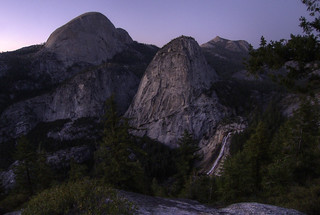
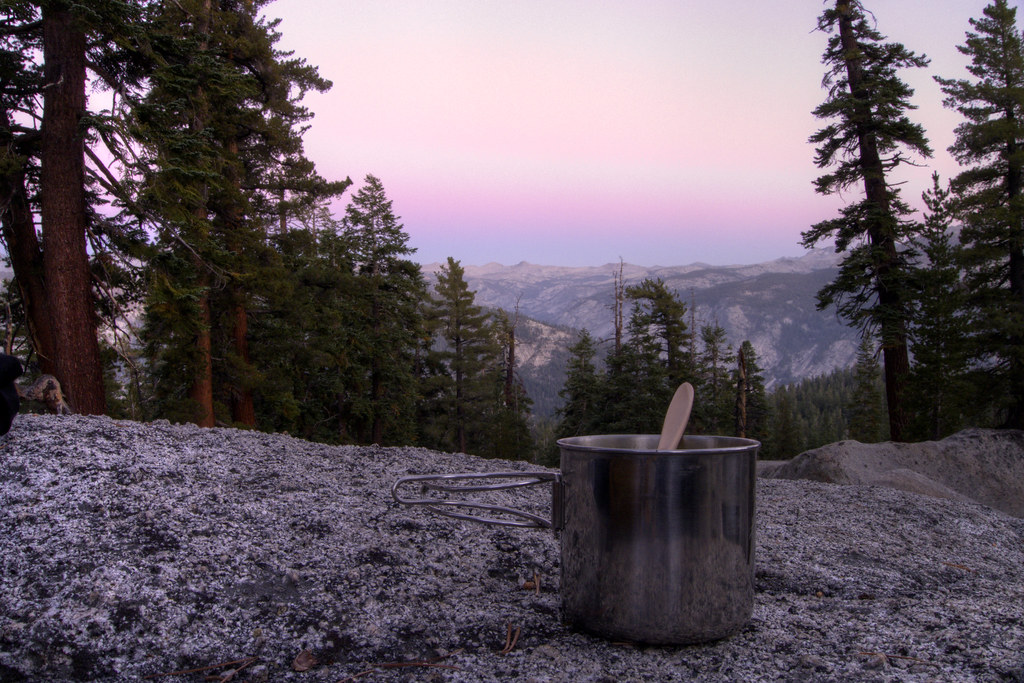
com-s.jpg)
com-s.jpg)
com-s.jpg)
com-s.jpg)
